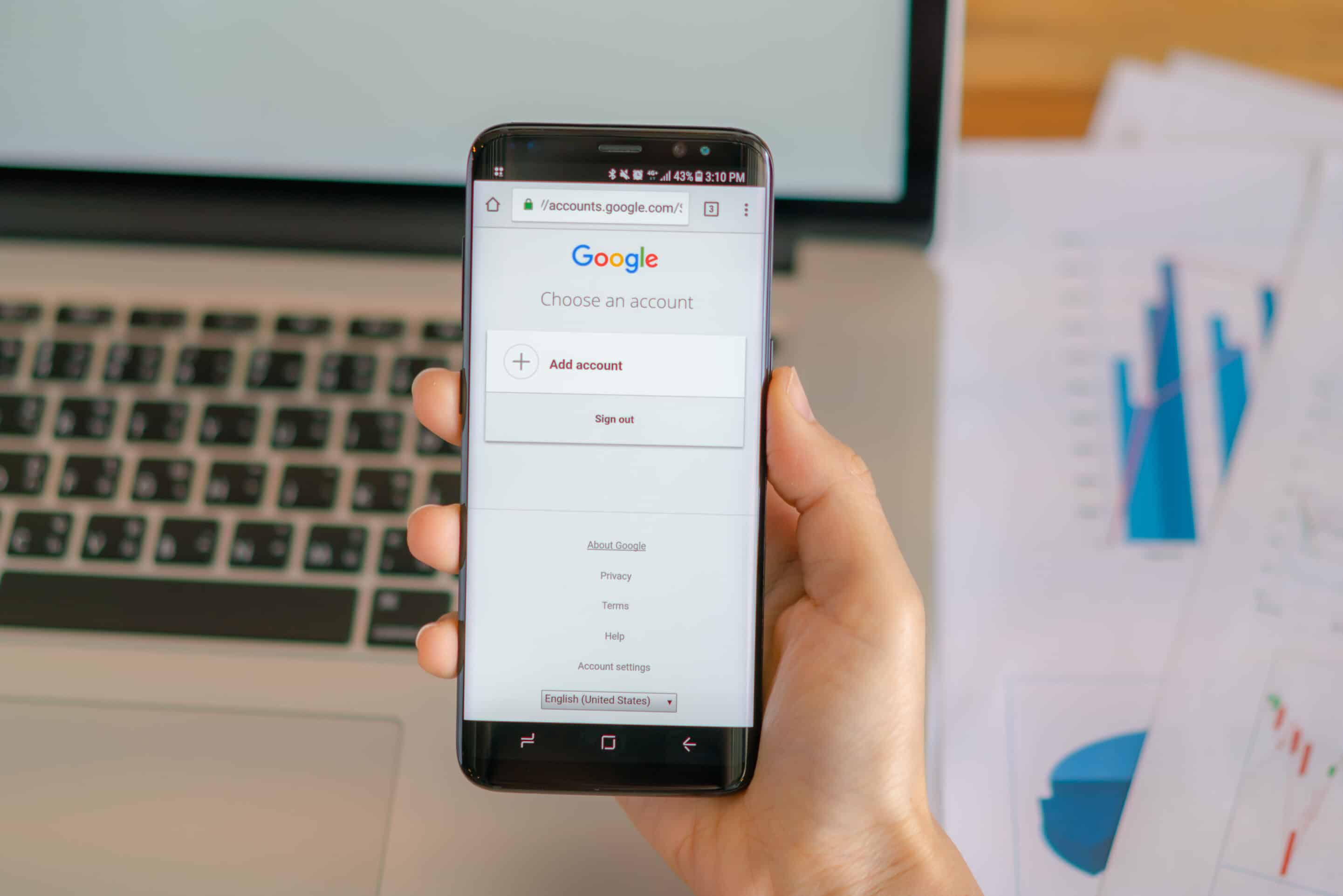On Tuesday, May 23rd, the Google Marketing Live 2023 took place with the majority of Google’s updates and announcements centering on how AI-powered tools can empower businesses to drive better results, connect with their customers, and deliver the right message at the right time. In this article, we have compiled an explanation of the updates on search ads, PMax and measurement.
1. Search
With billions of daily searches, Google recognizes the importance for advertisers to keep their marketing strategies up-to-date. Google’s recent advancements in AI-driven search ads are designed to assist advertisers in staying relevant and achieving the desired outcomes for their business in the ever-changing digital landscape.
Update 1: Easier Search Ads creation workflow with a new conversational experiences
Google announced new AI tools to help advertisers create Search ads in campaigns in an easier way. It will be a natural language conversational experience that will guide advertisers through the whole process of a campaign creation, generating keywords, headlines, or other assets. The more information you provide, the more accurate the suggestions would be. Google will give suggestions based on user’s input, but advertisers will have total control over these suggestions so they can keep them or edit them.

Source: Google. (n.d.). Google marketing live 2023: Multiply your results with search and performance Max campaigns. Google Ads Help
Update 2: Better control of Brand broad campaigns by using the new brand restriction tool
The most effective approach to adapt to evolving search patterns is by utilizing broad match keywords. Google enables broad match to help advertisers connect with new customers based on the meaning behind their searches, even if they don’t use their keywords exactly.
To increase control over the traffic related to advertisers’ brands, Google has launched a new tool called brand restriction, though it is still in beta. Thanks to this feature, advertisers gain access to new brand control, allowing them to specify the type of traffic they want to target while still benefiting from the advantages of broad match. It’s important to note that broad match is designed to be used in conjunction with Smart Bidding.

Source: Google. (n.d.). Google marketing live 2023: Multiply your results with search and performance Max campaigns. Google Ads Help
Update 3: New improvements in Smart Bidding with more accurate predictions on consumers search and intent
Google witnesses an immense volume of daily searches, ranging from common and interchangeable queries to more distinct ones. With Smart bidding strategies, advertisers can make more accurate assumptions about the search terms that will most likely result in sales and value for your company. Smart Bidding leverages the power of artificial intelligence to analyze billions of contextual signals – such as operating system, browser, and time of day – during the auction process. By doing so, it precisely optimizes bids for each unique search, ensuring optimal outcomes.
Google highlighted how their AI models supporting Smart Bidding are being improved and they announced that smart bidding will optimize more intelligently for search queries. This advancement aims to deliver greater value and enhanced long-term performance for advertisers.
2. Performance Max
Performance Max, released in November 2021, is a goal-based campaign type that allows performance advertisers to access all of their Google Ads inventory from a single campaign. With these campaigns, Google leverages artificial intelligence It is powered by AI technology that analyzes landing page content, assets, and product feeds to find new converting queries and generate relevant ads that match the users’ intention.
Update 1: New customer acquisition and re-engagement goals
Google has introduced two new customer acquisition goals: re-engagement goals and new customer acquisition goals. The re-engagement goals will allow PMax to assist in establishing connections with valuable existing customers, while the new acquisition goal is to empower businesses to focus their efforts on acquiring new customers who hold significant value for their operations. The new customer acquisition goal is a feature still in beta, so the recommendation is to contact your Google representative to activate it.
Update 2: Revamp the generation of high-quality assets in Performance Max with AI-powered creative tools
Adapting and scaling creative content to suit various channel placements can be challenging. To address this, Google is improving its ad creation tools powered by artificial intelligence to generate top-notch creative assets for PMax. Advertisers can simply provide information about their business and goals, and in return, receive valuable text, image, and video options that align with their needs.
 Source: Google. (n.d.). Google marketing live 2023: Multiply your results with search and performance Max campaigns. Google Ads Help
Source: Google. (n.d.). Google marketing live 2023: Multiply your results with search and performance Max campaigns. Google Ads Help
Update 3: Improve insights and reports to increase transparency
Advertisers have an increased need for transparency regarding the functionality of AI in serving their interests in PMax campaigns. To address this, Google is introducing new reporting and insights, providing a clearer understanding of the factors driving results. For instance, a new asset insight report that advertisers will be able to identify which creative assets resonate the best and receive recommendations for new AI-generated assets projected to improve their performance.
Another boost in the PMax insights is an improved search terms insights report that will give more information on the search categories. These reports analyze the search terms where ads appeared in the past 56 days, grouping them into search categories and subcategories to provide you with key performance metrics for each.
With expanded support for diverse goals, the availability of new AI-generated assets, and improved reporting and insights, Google is maximizing the potential of PMax. By exploring these updates, businesses can optimize their campaigns and achieve superior results at a faster pace.
3. Measurement
Update 1: Simplified implementation for enhanced conversions
Enhanced conversions is a functionality designed to enhance the precision of advertisers’ conversion tracking and enable more effective bidding. With enhanced conversions, first-party customer information like an email address, name, home address, or phone number is collected in your conversion tracking tags, hashed, and sent to Google in its hashed form.
It complements advertisers’ current conversion tags by securely transmitting hashed first-party conversion data from advertisers’ website to Google, ensuring privacy protection.
Having said that, Google is introducing account-level controls to streamline the process of setting up these enhanced conversions in Google Ads. Additionally, in the near future, the functionality of enhanced conversions will be expanded to encompass Search Ads 360.
Update 2: Importing fractional credits to Google Ads
Google has incorporated a new feature that enables the transfer of web conversion credits from GA4 to Google Ads using data-driven attribution.
In the past, web conversions were attributed in Google Ads after being imported from Google Analytics using a cross-channel last click method. This meant that the conversion would not be integrated into Google Ads if the last click did not come from Google advertising.
With this new update, Google Ads now integrates partial cross-channel conversion credits, even if the most recent non-direct click wasn’t a result of Google advertising, For instance, regardless of the final touchpoint, Google Ads will import partial credit for the advertisements if a client clicks on two Search ads, a YouTube ad, and a newsletter prior to making a purchase.
Update 3: Build and use Google Analytics 4 audiences directly within Google Ads
Create and utilize Google Analytics 4 audiences seamlessly within Google Ads. Effortlessly construct and incorporate pertinent Google Analytics 4 audiences while developing and overseeing advertisers’ Google Ads campaigns. This includes predictive audiences recognized by Google AI as having the highest likelihood of conversion, a unique attribute specific to Google Analytics 4.
Do you have any questions?
Do no hesitate to contact or or follow us on LinkedIn!
Image by jannoon028 on Freepik




